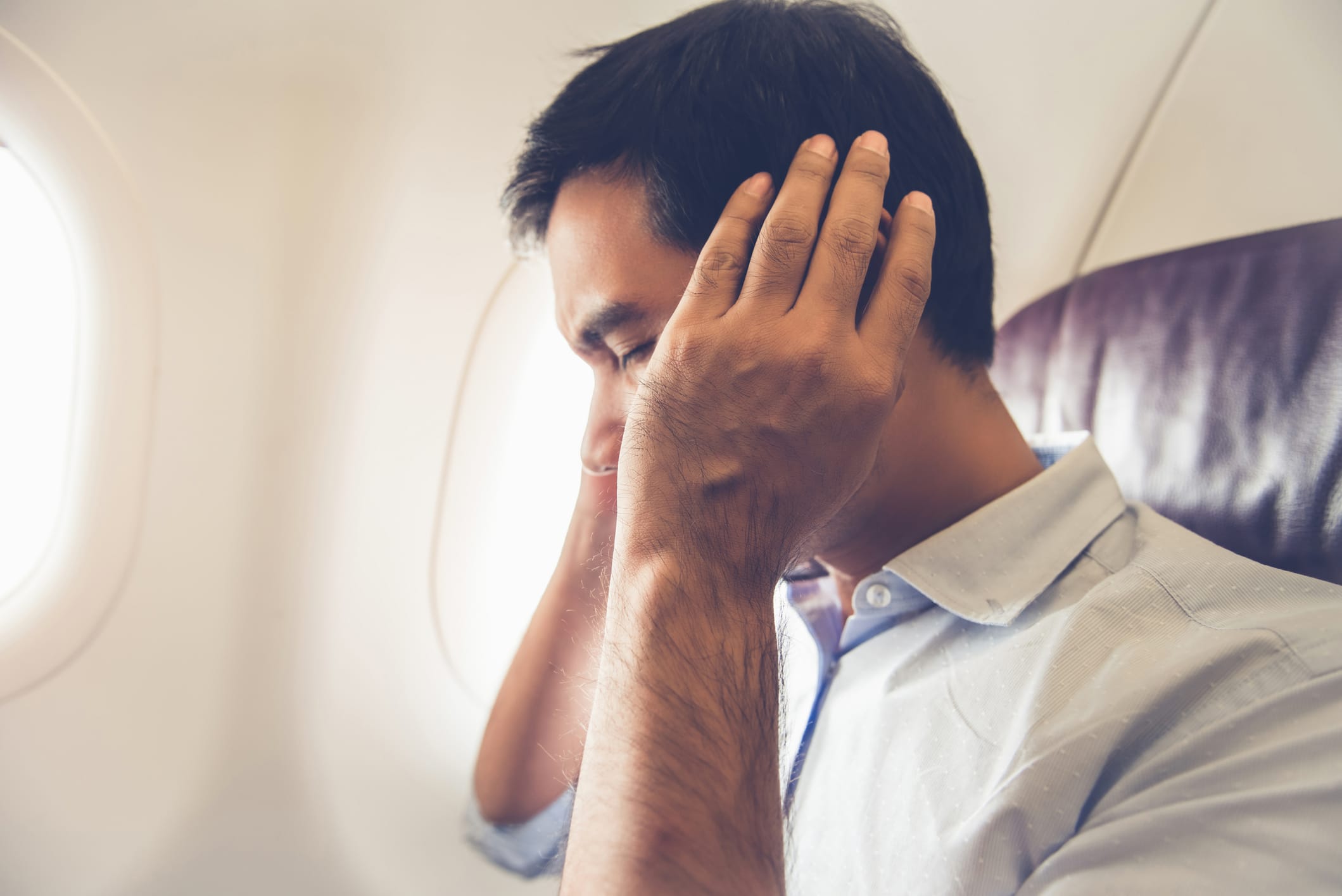WHY YOUR EARS HURT ON THE AIRPLANE
- Posted on: Jan 28 2022
WHY YOUR EARS HURT ON THE AIRPLANE AND WHAT YOU CAN DO TO HELP

Those who suffer from eustachian tube dysfunction know that flying can often be an uncomfortable experience. What causes ear pain when flying and how can you prevent it? Keep reading to learn about what you can do to make your next flight more comfortable!!
WHAT CAUSES EAR PAIN WHILE FLYING?
The eustachian tube is a small tube that connects the middle ear to the back of the nose. It helps with pressure equalization in the ears and opens with swallowing. During a flight, when there are shifts in altitude as the plane descends and the pressure in the cabin is changing, sometimes the eustachian tube cannot adapt quickly enough. Increasing negative pressure inside the middle ear may develop that can pull on the eardrum and cause discomfort and pain in the ear. Some will feel that their hearing is muffled as well.
HOW CAN I PREVENT EUSTACHIAN TUBE DYSFUNCTION?
- Manage your allergies before you fly. Allergies cause swelling inside of the nose and at the opening of the eustachian tube and make it more difficult for the eustachian tube to open. Taking antihistamines or oral decongestants like Sudafed 1 hour before flying can reduce some of this swelling and make it easier to equalize the ears.
- Stay awake during landing. This will help you sense pressure changes as they occur so you can better respond by equalizing your ears. Equalizing your ears can be done by:
- With your mouth closed gently pinch your nose and blow. This will help to move air up the eustachian tube and equalize the middle ear pressure.
- Chew gum or drink water when you start to feel discomfort in the ears. This creates swallowing and can help to open the eustachian tube and equalize the middle ear pressure.
WHAT IF I STILL HAVE EAR PAIN AFTER LANDING?
If you still have muffled hearing or pain for more than 24 hours after landing, it is recommended that you make an appointment to have your hearing evaluated and ears examined. Sometimes medication is required to assist the eustachian tube in opening. We will discuss allergy management as this is key in preventing future problems when flying. We will also make sure there are no underlying nasal or sinus issues that are causing this issue.
If you continue to have frequent ear pressure and pain despite trying the above techniques, a non-surgical procedure called Eustachian Tube Dilation can be performed to help widen the opening of the eustachian tube. This simple and painless procedure can be performed in the office under IV sedation.
Patients typically can work the next day and do not require pain medication.
SCHEDULE A CONSULTATION
If you think you may have eustachian tube dysfunction or to find out if you are a candidate for Eustachian Tube Dilation, call to schedule an appointment at Sinus and Snoring Specialists for a thorough evaluation. Contact us today at 512-601-0303 or complete our online appointment request.
Tagged with: ear pain, ear pressure, Eustachian Tube Dysfunction
Posted in: Ear and Hearing Care, Eustachian Tube Dysfunction

